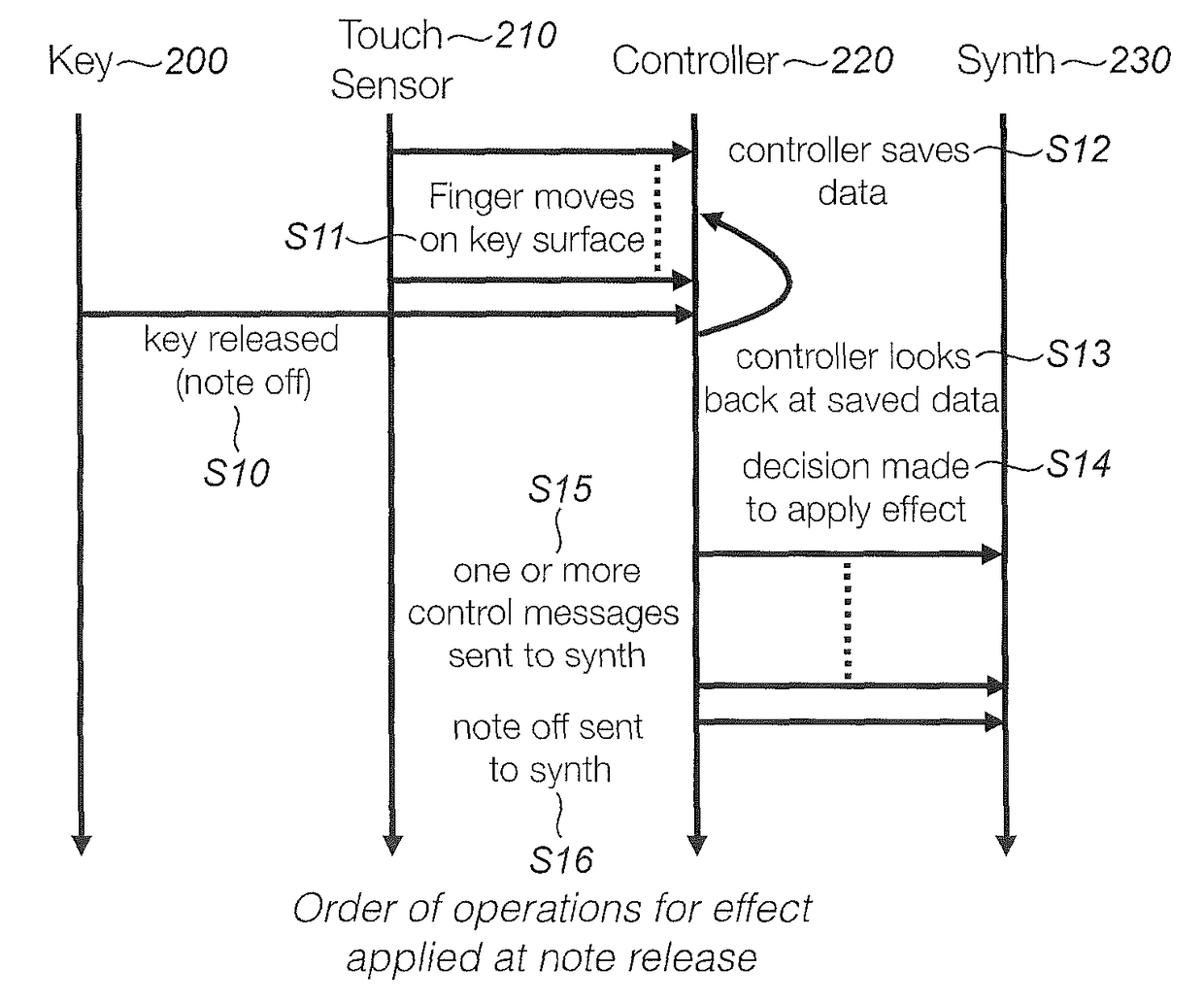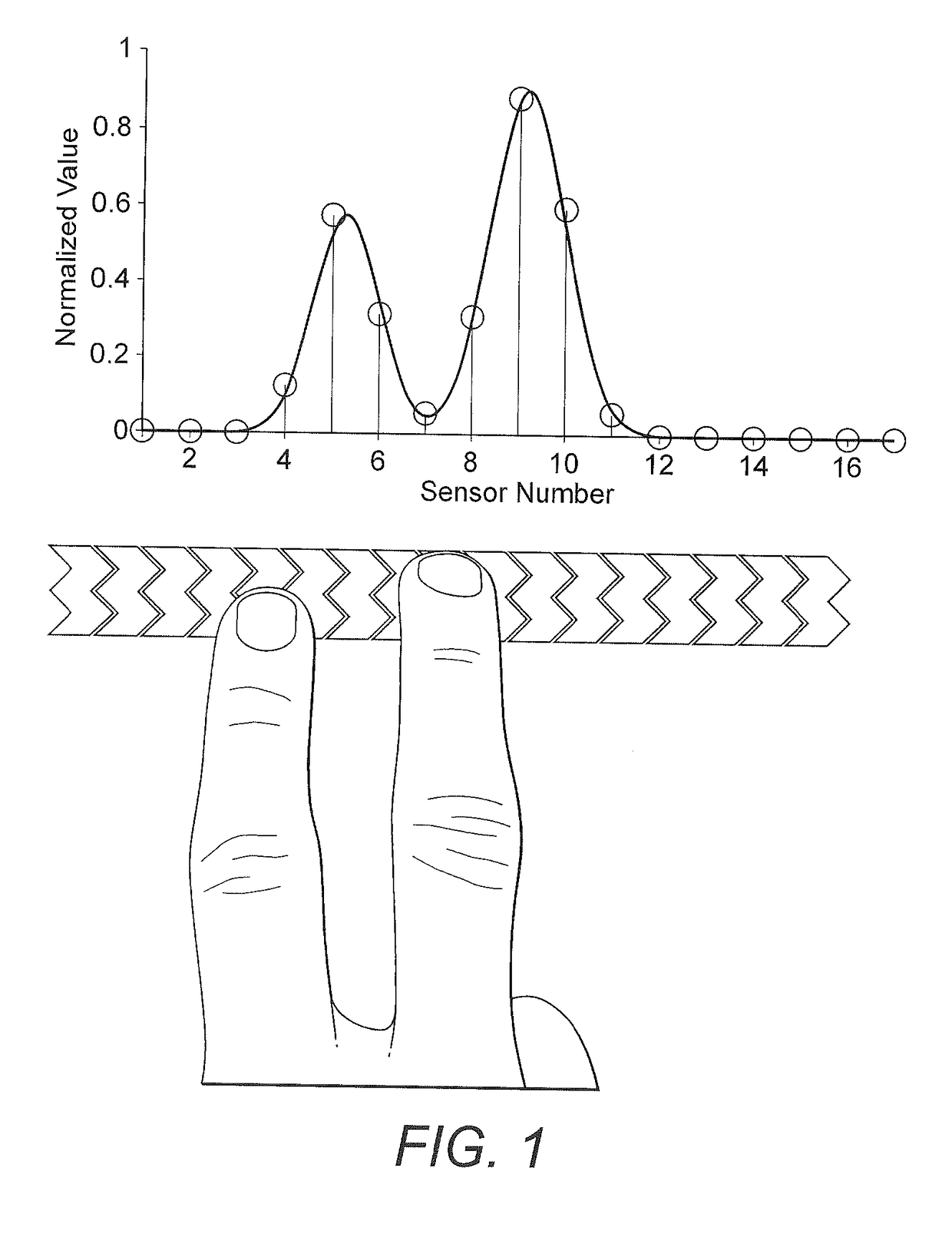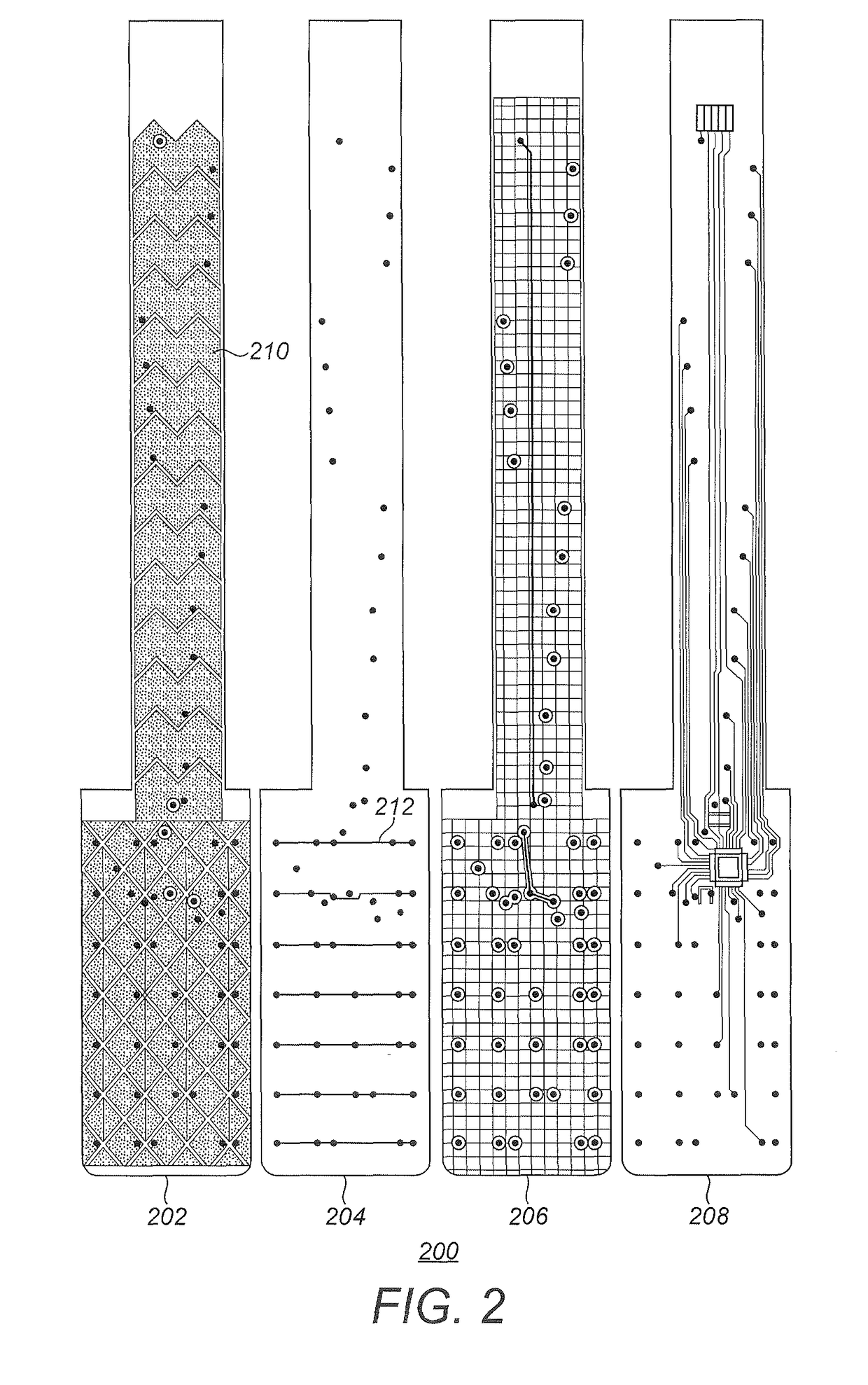Control methods for musical performance
a control method and musical technology, applied in the field of musical performance control methods, can solve the problems of lack of tactile feedback of touch screen controllers, which is crucial for many performers, and achieve the effect of reducing jitter
- Summary
- Abstract
- Description
- Claims
- Application Information
AI Technical Summary
Benefits of technology
Problems solved by technology
Method used
Image
Examples
example 1
[0082]Saxophone “scoop” using finger velocity at note onset. In this example, the keyboard is attached to a synthesizer that produces a saxophone sound. A “scoop” is a common jazz saxophone technique where the note begins below its normal pitch and slides into the expected pitch. In this example, a scoop is played by moving the finger along the key surface at the time of note onset. The measured finger velocity controls the intensity of the scoop. There are two defining features to this example: first, that the instrument recognises that the finger is moving and therefore starts the pitch below its expected value, and second, that the pitch may not exactly track the finger motion in time; for example, the pitch bend may last for longer than the original finger motion.
example 2
[0083]Trumpet “fall” using finger velocity at note release. In this example, the keyboard is attached to a synthesizer that produces a trumpet sound. A “fall” is a jazz technique where the player plays a series of descending pitches by loosening the embouchure at the end of a note. There are several variations on this idea which also change the pitch at the end of a note (up or down): “buzzes”, “doits” etc. In each case, such techniques are triggered by measuring the velocity of the finger as it leaves the key. If the finger remains in the same position on the key as the note ends (the usual way of playing), the note ends normally. If the finger is moving quickly across the key surface, for example if the player pulls the finger toward the body (away from the keyboard), a fall is triggered. The speed or intensity of the fall may depend on the speed of the finger or the distance it travels, but as in Example 1, there need not be a one-to-one mapping between instantaneous finger posit...
example 3
[0084]Rapid bow changes on a violin using multiple fingers on the key. In this example, the keyboard is attached to a synthesizer that produces a violin sound. Rapid bowing of the same string is a common technique in many styles of music from classical to folk fiddling, but it is difficult to rapidly retrigger the same note on a keyboard. Here, placing a second finger on a key which is already held down produces a bow change sound without changing the pitch. By alternating quickly between two fingers, it is possible to produce a series of rapid bow changes.
PUM
 Login to View More
Login to View More Abstract
Description
Claims
Application Information
 Login to View More
Login to View More - R&D
- Intellectual Property
- Life Sciences
- Materials
- Tech Scout
- Unparalleled Data Quality
- Higher Quality Content
- 60% Fewer Hallucinations
Browse by: Latest US Patents, China's latest patents, Technical Efficacy Thesaurus, Application Domain, Technology Topic, Popular Technical Reports.
© 2025 PatSnap. All rights reserved.Legal|Privacy policy|Modern Slavery Act Transparency Statement|Sitemap|About US| Contact US: help@patsnap.com



